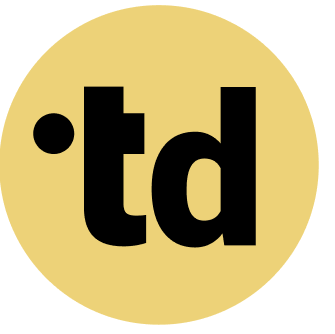Key Takeaways
Workload planning is the strategic distribution of tasks to maximize team performance and well-being, moving beyond simple to-do lists.
Effective planning can increase profitability by 23% and reduce employee turnover by 25% by preventing burnout.
Modern workload planning integrates AI and is crucial for managing hybrid teams of humans and bots effectively.
Every team is on a hero's journey, battling the dragons of overload and ambiguity. In Germany, where only 16 percent of employees feel engaged, the quest for clarity is urgent. The villain is unstructured work, leading to burnout that affects nearly 22 percent of European workers. But there's a powerful ally in this fight. This guide explains what workload planning is and how it equips Team Architects to build stronger, more effective hybrid teams. It's time for a new chapter where Many people knows their role and contributes to a shared win.
Practical Framework for Team Architects
As a Team Architect, you can apply these principles to your organization:
- Map Current State: Document existing roles and responsibilities using a tool like teamdecoder.
- Identify Gaps: Where are roles unclear? Where do humans and AI agents overlap?
- Define Clear Boundaries: Specify which tasks are handled by humans vs. AI agents.
- Create Accountability: Assign clear decision rights for each role.
- Iterate and Improve: Continuously refine based on team feedback.
Confronting the Chaos of Unmanaged Work
Unstructured work creates a cycle of stress and inefficiency, with 71 percent of German employees reporting high stress levels. This isn't just a feeling; it's a measurable drain on performance, contributing to significant productivity losses. When roles are undefined, teams spend up to 30 percent of their time on duplicated efforts. The lack of a clear plan is a primary cause of burnout, a syndrome from chronic stress that most employees have experienced. This reactive state keeps teams fighting fires instead of creating value, a challenge many German companies face. Addressing this chaos begins with understanding the structure of work itself.
Sweet Teams Are Made of This: Core Principles
So, what is workload planning? It is the strategic process of distributing and managing work across a team to maximize performance and well-being. It moves beyond simple task lists to create a sustainable system for productivity. Engaged teams, a direct result of balanced workloads, show a a portion of increase in profitability. The process ensures that the right people have the right amount of work at the right time. You can explore different workload planning techniques to find what fits your team. This clarity is the foundation of a high-performing team.
Architect Insight: Three Layers of Planning
For Team Architects, effective planning operates on three levels. Our Playful Tip: Think of it as a recipe for success, with each ingredient playing a vital part. A clea A clear plan starts with these steps:
- Capacity Assessment: Understand each team member's available hours, skills, and current commitments, which can reduce overallocation by a significant portion.i id="">Task Prioritization: Define project scope and rank tasks based on strategic importance, ensuring focus on high-value activities.
- Resource Allocation: Assign tasks based on skills and capacity, preventing the overload that leads to burnout.
Deep Dive: Modern workload planning integrates AI to forecast future needs, improving resource accuracy by up to a significant portion. This proactive approach transforms team management from a guessing game into a strategic advantage, which is central to what is workload management.
From Overload to Overflow: The Benefits of Clarity
Implementing workload planning delivers immediate, measurable wins for your team. Companies that foster a healthy work-life balance see some less employee turnover. It directly addresses the high workloads and lack of control identified as key burnout precursors by health organizations. By optimizing how tasks are distributed, teams can increase their productive output by over a significant portion. This isn't about working harder; it's about providing the clarity needed to work smarter. You can even use a workload capacity planning template to get started. This newfound efficiency builds momentum for future projects.
Teams Just Wanna Have Fun: Making Planning a Reality
Bringing workload planning to life is about creating shared habits, not rigid rules. It starts with open conversations about capacity, where teams can honestly discuss their limits. More than the vast majority of German employers now recognize the value of mental health benefits, which aligns with sustainable workload practices. Using a visual tool like teamdecoder helps make workloads transparent and easy to adjust. You can try teamdecoder for free to see how it works. This visibility empowers team members to take ownership of their schedules. Learn more about workload planning and work allocation. This collaborative approach turns planning into a positive, team-building exercise.
Make Bots and Humans Click: Hybrid Team Governance
The future of work is a hybrid of human and AI collaboration. Effective workload planning is essential for this new era of organizational development. It ensures that AI agents handle repetitive, data-heavy tasks, freeing up human team members for strategic and creative work. This can boost a team's creative output by a significant portion. Integrating AI is a key part of modern workload planning definition. This human-in-the-loop model requires clear roles and responsibilities for both humans and their digital counterparts. The goal is seamless strategy operationalization, where technology amplifies human talent. This hybrid approach is the next step in building truly resilient teams.
Architect Insight: Scaling Roles from Day One
For startups and scaling companies, defining roles early prevents future chaos. Workload planning provides a blueprint for growth, ensuring your team structure evolves with your business. Teams that define roles clearly from the start report 35 percent faster project completion times. This is crucial when forecasting workload for upcoming projects. Our Playful Tip: Use role templates for core functions like DEI or customer centricity to build a solid foundation.
Deep Dive: A dynamic tool allows you to model future team structures. You can map out responsibilities for a new task force or department before making a single hire. This foresight is critical for sustainable scaling and helps prevent burnout by balancing workloads. It transforms organizational development from a reaction to a planned strategy.
Your Next Move: From Planning to Playing
Understanding what workload planning is marks the first step on the journey from chaos to clarity. The real transformation happens when you put these ideas into action. By giving your team the structure to thrive, you conquer overload and make space for creativity and flow. This is how modern leaders build the future of work, one well-defined role at a time. With the right tools, you can become a true Team Architect. Explore our platform for strategic workload planning to learn more. See our pricing and discover how simple it can be. Try teamdecoder for free - shape your team and make change feel like play!
#TeamArchitecture #HybridTeam #WorkloadPlanning #OrganizationalDevelopment
More Links
Federal Statistical Office of Germany (Destatis) addresses the topic of workplace stress as a dimension of the quality of work.
Statista provides statistics on the development of workload in Germany.
Hans Böckler Foundation discusses how high workload can lead to illness.
German Trade Union Confederation (DGB) offers an index for good work.
Fraunhofer IAO describes their research area of organizational development and work design.
German Association of Management Consultants (BDU) discusses the importance of organizational development.
FAQ
What is the main goal of workload planning?
The main goal is to balance the amount of work assigned to a team with its actual capacity. This optimizes resource use, prevents employee burnout, and ensures that strategic priorities are completed efficiently and on time.
How often should we review our team's workload plan?
For most teams, a weekly review is effective for making short-term adjustments. A monthly or quarterly review is also recommended to assess overall capacity, reprioritize long-term goals, and ensure the plan aligns with broader company objectives.
What tools can I use for workload planning?
While spreadsheets can be a starting point, dedicated platforms like teamdecoder offer greater visibility and dynamic features. They help you visualize capacity, manage roles, and integrate with your existing workflows for a more seamless planning experience.





